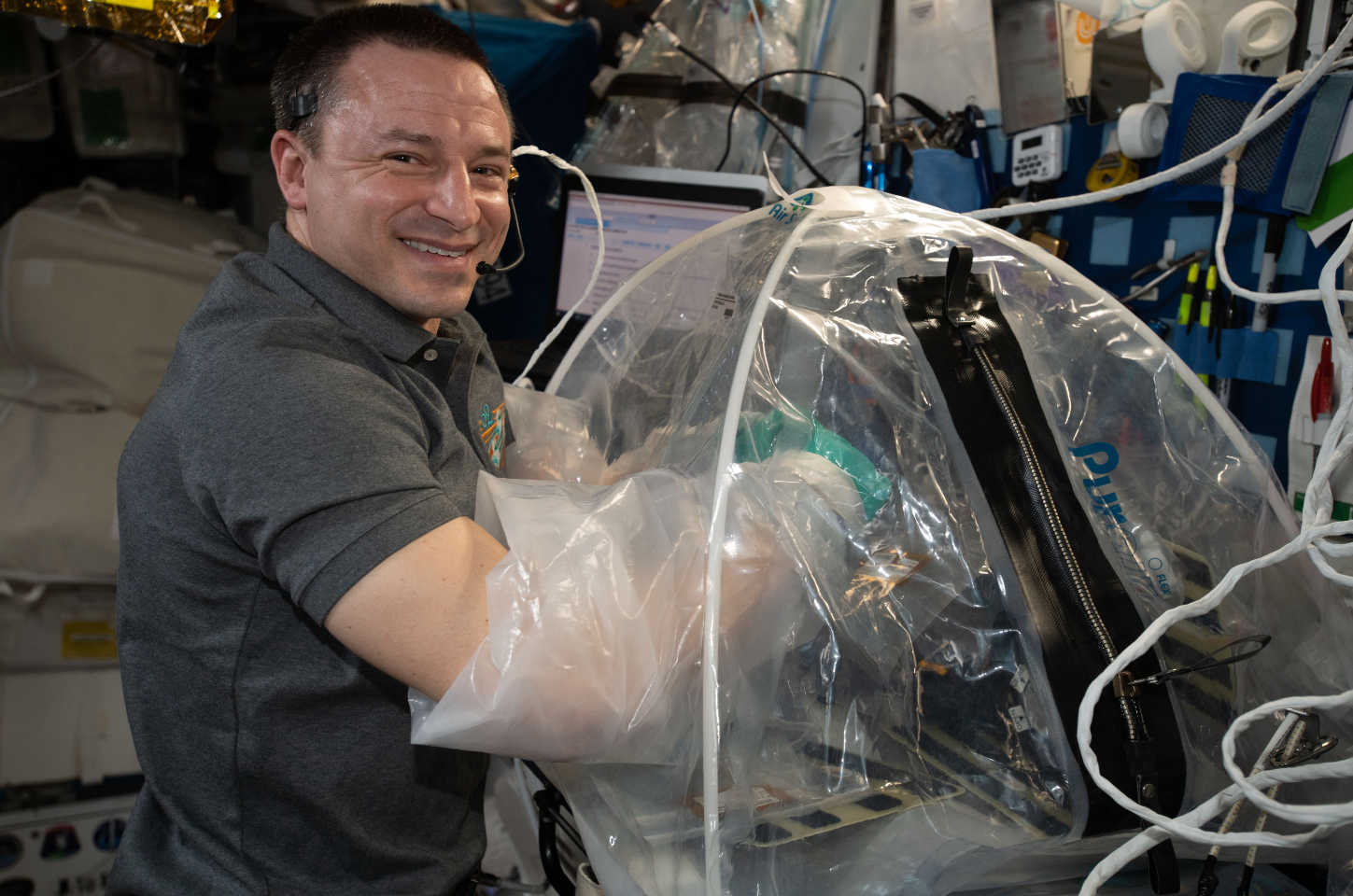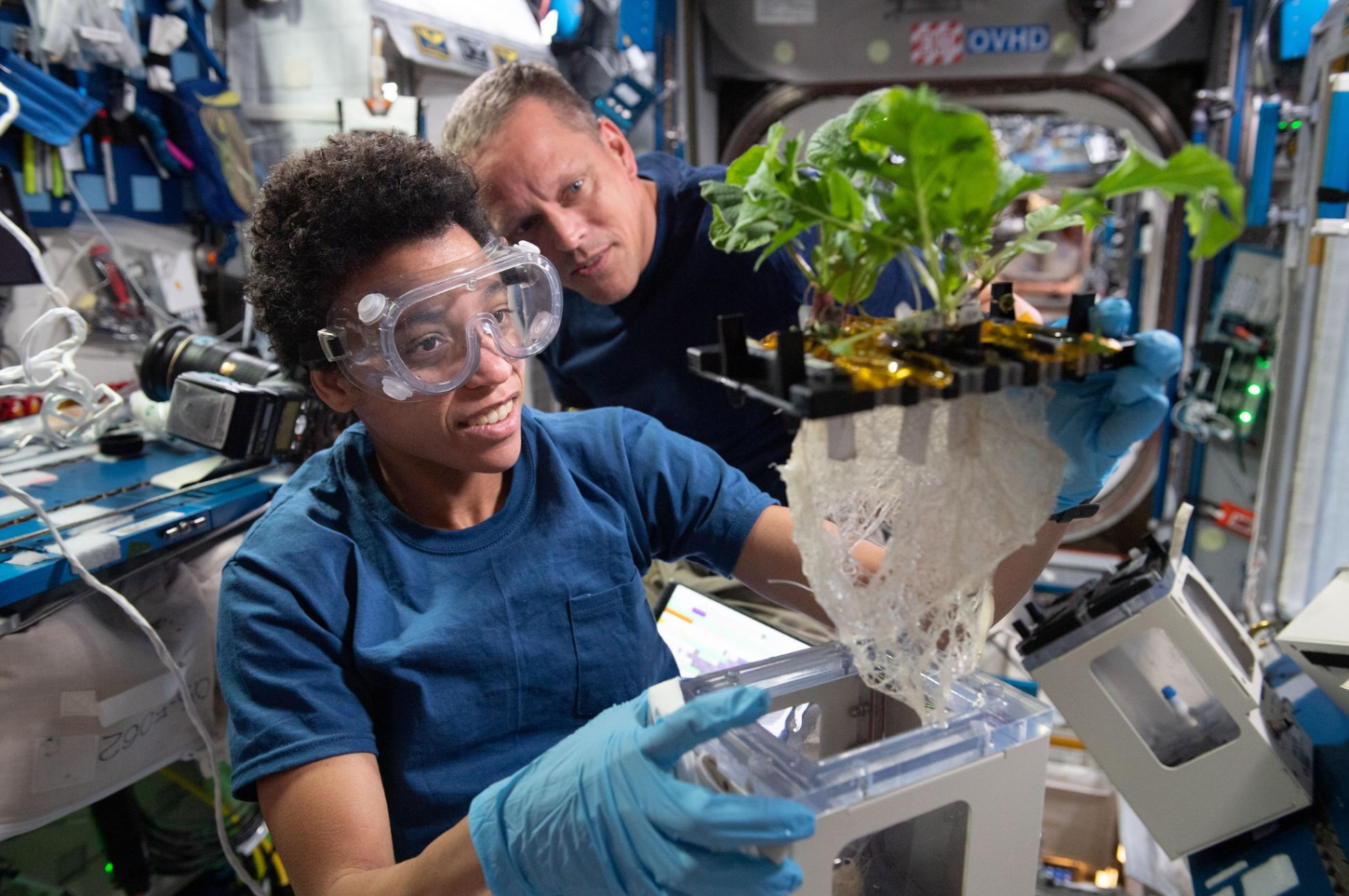Station Science Top News: Oct. 15, 2022
Researchers examined how microgravity impacts cardiac stem cells, specifically cardiomyocytes, the cells that generate the contractile forces of a heartbeat. Results showed that space-cultured cells were three times larger and had 20 times more nuclei than Earth-cultured cells, and showed increased gene expression beneficial to structure and function. An improved understanding of specialized stem cell development helps advance regenerative medicine.
These results from the MVP Cell-03 study demonstrate that microgravity can modify and improve the production of specialized cardiac stem cells, and that gene activity involved in their development, survival, and function increases in space. Further study into some of the genes that were increased (like those that support cell growth, survival, and cardiac development) could be very helpful on Earth. If scientists can better understand how these genes increase cell growth, they can modify gene expression to produce stronger, safer cells for cardiac therapy.
As part of preparing for MVP Cell-03 aboard the International Space Station, researchers explored new ways to culture living heart cells for microgravity research. Explore previous results from MVP Cell-03.

NASA astronaut and Expedition 62 Flight Engineer Andrew Morgan conducts cardiac research activities inside the portable glovebag. Credits: NASA
***
Results of NASA’s Flame Design study indicate that steady-state, or unvarying, diffusion flames can exist in the presence of heat loss. Diffusion flames have the fuel and oxidizer separated prior to ignition (a candle is a common example). This study provides a better understanding of fire behavior in microgravity for improved spacecraft and crew safety.
Microgravity studies of combustion provide various advantages over Earth-gravity studies. For example, microgravity eliminates the gravity-driven flicker of a flame, yielding quasi-steady flames. The Flame Design experiment looked at the next level of this — examining fully steady-state flames that lack this flicker. The study compared numerical models of steady-state spherical diffusion flames with actual ignitions aboard the International Space Station. Results showed that although theoretically it takes an infinite time for flames to reach steady state, the system behaves like it is at a steady state after 28 hours. An understanding of these flames’ behavior in microgravity also contributes crucial information to fundamental combustion research.
Below, watch some of the flames burned for this study.
***
After months aboard the space station, the astronauts of NASA’s SpaceX Crew-4 mission returned home this week. Here is a look at some of the scientific milestones accomplished during the Crew-4 mission:
- The Immunosenesence investigation examined microgravity-induced changes in human immune cells that resemble those associated with aging on Earth.
- Crew-4 worked on Food Physiology, an investigation that documents the effects of dietary improvements during spaceflight on immune function, the gut microbiome, and nutritional status indicators.
- Samantha Cristoforetti worked on ESA’s (European Space Agency’s) FSL Soft Matter Dynamics - PASTA, a study of whether additives increase or decrease the stability of emulsions, which are mixtures of two liquids that typically do not blend. These phenomena can be better observed in microgravity, where the effects of buoyancy on emulsions are absent.
- The crew participated in Acoustic Diagnostics, an ESA investigation that explores possible adverse effects on astronaut hearing from equipment noise and microgravity. The data could help researchers better understand the sound environment on the space station and support the development of ways to protect crew hearing.
Read the Crew-4 science scrapbook here.
Watch the Crew-4 science highlights video below.

NASA astronauts Jessica Watkins and Bob Hines work on XROOTS, which used the station’s Veggie facility to test liquid- and air-based techniques to grow plants rather than traditional growth media. Credits: NASA







